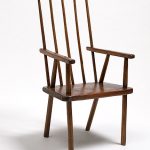We may receive a commission when you use our affiliate links. However, this does not impact our recommendations.
Beer shows up in many accounts of early workshop life. Not only was it an important source of nutrition, it also served as payment for trespasses and a way to mark important days in the shop, such as when an apprentice was promoted to journeyman. Beer also shows up in workshop recipes and for diluting glue.
Recently Thomas Lie-Nielsen encountered a use for beer that I hadn’t heard in the book “Ask the Fellows Who Cut the Hay” (1956) by George Ewart Evans, an account of rural life in a Suffolk community. Take a look.
The old community had many terms connected with beer which are worth passing note: dew beer was the beer bought with the shilling earnest money given by the former to each worker when the harvest contract was signed. With the dew beer the workers wetted the sickle, by filling a ceremonial cup to the success of the harvest. Trailing beer was bought out of the fines paid to the Lord of the Harvest by anyone who had trampled down the standing corn or hay, thus making it more difficult for it to be cut. The former’s wife at one of the Blaxhall farms once had to pay trailing beer money to the Lord of the Harvest because she had allowed her hens to stray into a field of uncut corn. Key beer was the strongest beer of all, so-called because for reasons of policy it was kept under Iock and key.
But home-brewed beer had other uses in addition to its legitimate one. Thick beer was often used to help cure hams; also many women here believed that beer was the ideal hair-wash; it was supposed to make the hair shine. Another use for it was the staining of furniture. This was before the invention, or at least the widespread marketing, of furniture polish. Beeswax was much too costly to use on cottage furniture, and was kept chiefly for the manufacture of candles for churches and the bigger houses. The chair on which Robert Savage spent most of his last days is a golden brown in colour – acquired through frequent stainings with beer. It is possible that this custom of staining chairs with beer derives from a practice that used to be prevalent in the brewery which was built on the site of Shakespeare’s Globe Theatre in Southwark: in the old days the customers, it is reported, poured some beer on to their chairs and sat on it in their leather-breeches. If a customer stuck to the chair he knew that the beer was of good quality.
While I’m not going to dispute this account, I want to think about the chemistry a bit – what’s left after the water and alcohol evaporate. It usually is a sticky mess. Part of my brain wonders if the “staining” is also a result of water-staining, dirt, sweat and other bodily oils. Not to mention the natural darkening process many wood species encounter from exposure to oxygen and light.
But you can bet that the next time I spill beer on my chair that I’m going to claim it’s just part of the finishing process. Oh, and next time I buy a six-pack I’m going to write it off as a business expense under “finishing supplies.”
— Christopher Schwarz
Want to learn about modern finishing practices? The best book for getting started is Bob Flexner’s “Wood Finishing 101.”
Here are some supplies and tools we find essential in our everyday work around the shop. We may receive a commission from sales referred by our links; however, we have carefully selected these products for their usefulness and quality.











After saw I got shocked. Thanks for the inspiration.
This reminds me as the comparison sometimes made among musicians about the difference between a violin and a fiddle: you can spill beer on a fiddle! Maybe THIS was the secret to the famous Stradivarius finish…
Could the actual “finishing agent” be starch? There are starch based glues and paints, why not starch finishes as well..?
My somewhat limited understanding is that the yiest can turn only a small portion of the sugars in the malt into alcohol during the fermentation. The “rich and full bodied” beers have lots of sugars left in the beer. That could meant that the strong dry IPAs (where majority of the malt is turned into alcohol) are not as good for finishing the wood, but more suitable for finishing the wood worker.
I just write it off as a “Business Expense”!
I wonder if the carbon dioxide in the beer has any effect on the color or patina of wood. I think one of the things they monitor in wood decay is the amount of CO2 being produced but I’ve never read anything about the effects of adding it to the surface. Dissolving CO2 in water produces carbolic acid. Maybe that reacts with compounds in the wood. Just some idle thoughts.
http://cumpiano.tripod.com/Home/Articles/Transcriptions/Clodpoll/clodpoll.html
Auguste Clodpolle used cognac as the solvent for finishes, in alcohol lamps and glue pots, and was soaking his banjo heads in wine and beer.
“…to make his well-known drinking habit tax-deductible”
It is easy to believe that the beer could lead to gout then the gout stools found on The Furniture Record Blog. So if these folks suffered from gout as severely and wide spread that the number of stools might suggest that multitudes of carpenters and joiners may have endured this affliction. So I suggest that as they could not stand to accomplish their craft that the Roman workbench or some variant was introduced to allow them access to the bench. So beer is responsible for the Roman workbench. Just a thought…
Is that a 3 legged chair converted to a 4 legged chair?
Maybe it got legless after too much beer.
This is the first reference I’ve seen for using beer as a wood stain. But I have seen several references to using it as a wood cleaner/polish.
It seems logical to me that they would have used the darker beers as stains. Say from what we’d call red ale on up to stout. Small beer would hardly be worth consideration since it was only a thirst quencher.
Plus, if they were looking to see if they stuck to the chair, you’d likely need a higher gravity beer (i.e. started with more fermentable sugars) such as a brown ale or porter, et al.
Do you know the dimensions of the chair? Proportionally, it look short in the picture to my eye.
Oooh, looks like my “finishing supplies” budget is going to increase as well!